Media | Articles
6 diagnostic steps for when your car starts making noise

Sitting on the cool floor of the gymnasium in my elementary school, firefighters stood in front of us and hammered in the process for what to do if I ever find myself on fire: Stop, drop, and roll. The simple sequence, forced into our little sponge brains from an early age, has readily crossed my mind a few times in the past when I may or may not have been on fire. It helps to have something quick and simple like this to remember when you are on fire, but what about a quick process to prevent the fire in the first place? The best offense is a good defense and all that. Your vintage car is no different.
The truth about classic cars is that problems will arise from regular wear and use, even if you meticulously maintain them. Modern cars have that fancy OBDII port where you can plug in a little computer and get some information, but for most of us, the only On Board Diagnostics ports in our cars are our ears, nose, hands, and eyes. But just as an OBDII scanner only tells you part of the story on your daily driver, our senses are rarely able to reveal a vintage car’s issue in full. Luckily if you approach things with a formula just like “stop, drop, and roll” your brain has a fighting chance of turning those sensory codes into a proper diagnosis.
I assess problems with the vintage cars I’m involved with using these six points. They aren’t catchy, but you will likely find that this process—or some version custom tailored to you and your car—will likely be one of the quickest ways to find just what is acting up on your favorite ride.
Is that a new noise? Or lack of noise?
So many of the problems that crop up often identify themselves first with a noise. Squeals, squeaks, clatters, or scraping are all things cars in proper condition do not do. Therefore, if your car is making a noise other than an induction honk or exhaust sound, it is likely asking for help. The first step is acknowledging you have an issue, now it’s time to get to investigating.
Is it rotational?
That noise you heard probably isn’t immediately giving up its location, but the fastest way to locate a noise is by approaching it scientifically. There are really only two types of noises on cars: Rattles and grinds.
Marketplace
Buy and sell classics with confidence
Rattles generally stem from a part that should ordinarily be held in place suddenly being able to move. They tend to be more random, or tied to specific events—a curb impact, a bad pothole, or the failure of a retaining clip or bolt, to name a few. If the noise you’re hearing falls under these criteria, use your ears and hands to locate the perpetrator by trying to duplicate the problem and zeroing in on where the sound is coming from.
Grinding, on the other hand, is a version of your car engaging in an unprompted form of self-machining. The noise will likely have a cadence or timing that matches the rotational motion of some part of the car. To locate a rotational noise, continue on and ask yourself these next few questions.
Is it tied to engine speed or vehicle speed?
So your car is making a rotational noise. Time to narrow it down further. The cadence or timing of the noise will tell you a lot if you take the time to listen. Is it timed with the vehicle’s speed while driving? That points towards the suspension, chassis, or wheels. Slightly slower than vehicle speed, and it’s time to look at the driveshaft or transmission. If the noise matches engine speed or happens when the car is not moving, start under the hood. Now that you have an area to inspect narrowed down, you need to look for witnesses to tell you what happened.
Are there any witness marks?
While our cars are comprised of inanimate objects that sometimes actively conspire against us and our freedom of travel, with careful poking and prodding you can often get at least one part to flip and spill the beans on which part isn’t working as it should.
Worn-off paint, a slightly polished finish, oil present where there shouldn’t be, or even a small amount of metal shavings are all things that will appear if two things that shouldn’t be touching are. Most everything that turns on a car can be turned by hand when the engine is off, so taking a moment to try and turn things with your hands will often reveal a likely culprit, especially if there’s a lot of effort required to rotate something that should be spinning somewhat freely. This would be the case for a generator or alternator that had bushings fail and now has more resistance than it should. Same for power steering pumps or air conditioner compressors.
Ooh, that smell. Can’t you smell that smell?
Don’t leave out your other senses when inspecting. Odors can be very telling once you’re acclimated to your car. Failing brakes have a distinct smell, and if you catch a whiff of it, that’s a sign to stop ASAP and figure out what is wrong. Driving with a dragging brake can have tragic results for more people than just you. A slipping belt could have a burning rubber odor. An exhaust leak will often reveal itself through a ticking sound, but you may also smell exhaust in places where you shouldn’t normally, like the cabin.
All of these odors are fairly specific, but occasionally you might just smell something that’s running at a temperature higher than normal. In that case, here’s the next question to ask.
Why is that hot?
The other sense that sometimes gets neglected is touch. We use can use touch to hunt for things that are hot and either shouldn’t be or are just hotter than usual. This is a great way to find wheel bearings that are on their way out, as a failing bearing often builds far more heat than a properly functioning one. By holding the back of your hand near the center of your wheel, you can often sense enough heat to tell you if you need to look further. Same for dragging brakes or a failing U-joint. Friction creates heat, which also discolors metal and paint, thus identifying problem areas.
***
No, this sequence isn’t nearly as catchy as “stop, drop, and roll” but then again, diagnosing a complex system like a car is usually more complicated than identifying you are on fire and need to be put out. Our cars are always talking to us and a new noise, smell, or feeling is often a call for help. Ignoring any of these indications often leads down a sad path.
Will these steps lead you to exact repairs? Not always, but using these to narrow down the problem to a specific area will help significantly when asking others for help. Mechanics function on “trust, but verify” so they will often take anything you tell them when dropping off a car for work with a grain of salt, but being able to tell them what you think is wrong and why you think that often goes a long way towards saving them work and saving you money. Who doesn’t want that?
***
Check out the Hagerty Media homepage so you don’t miss a single story, or better yet, bookmark it. To get our best stories delivered right to your inbox, subscribe to our newsletters.
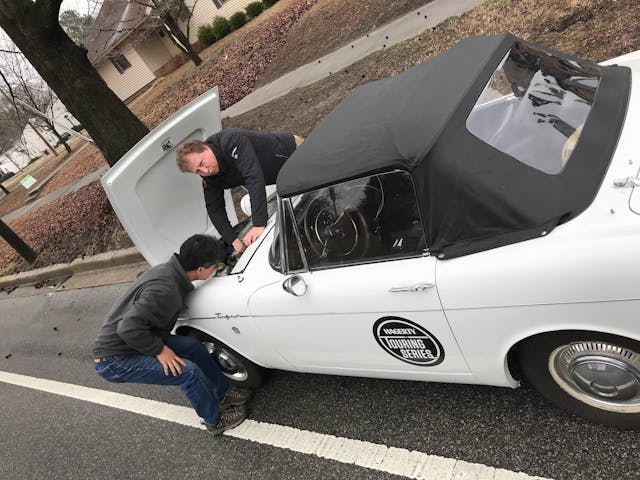
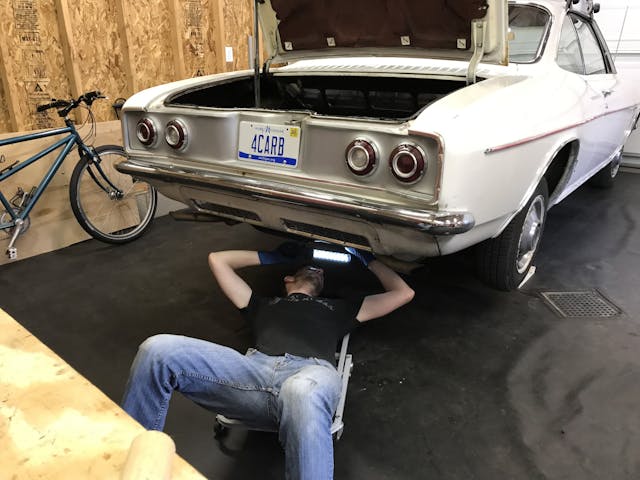









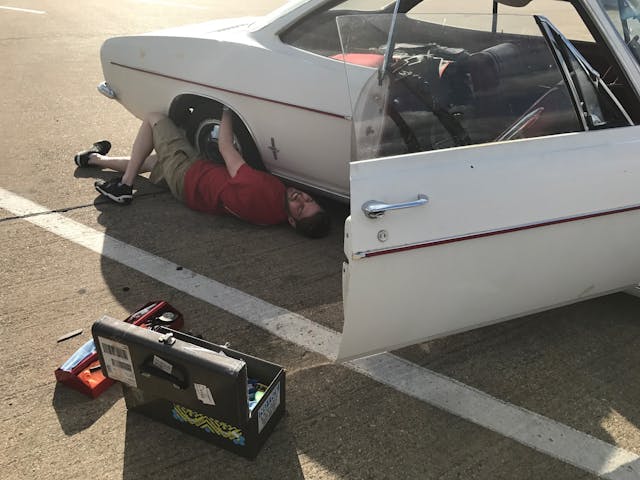
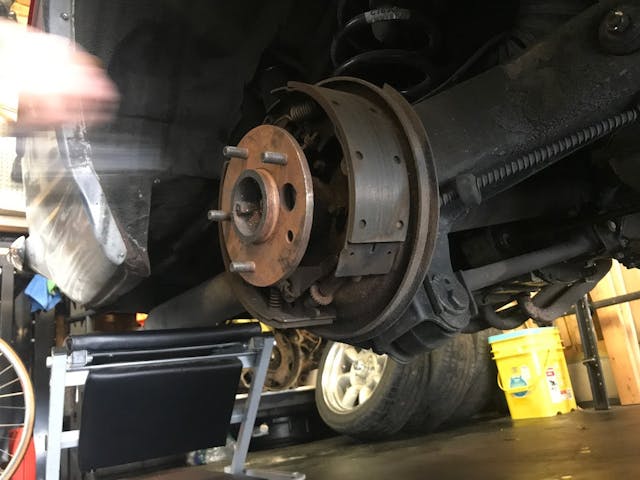
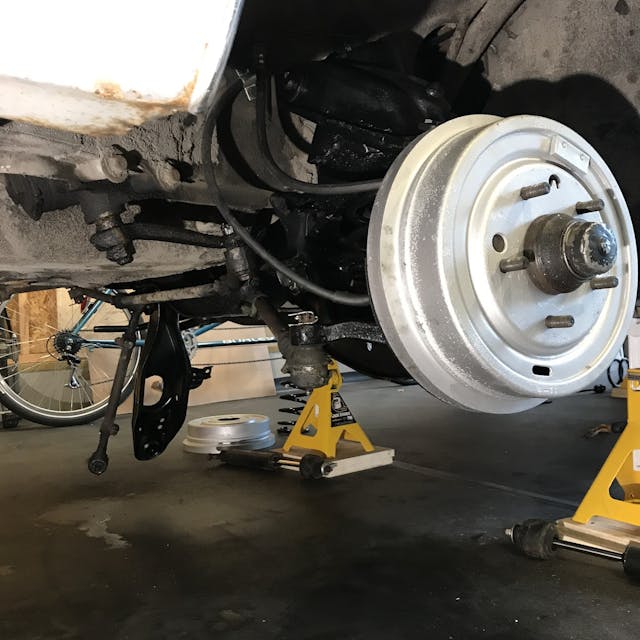



I rebuilt the engine in my Austin Mini, and put in raised dome high-compression pistons. I changed the the cylinder head for one from Austin Healey sprite which had bigger valves and better flow. Put the engine in a fired it up only to hear a knocking sound. Hauled it out and took it apart to check everything. I could not find anything wrong and could not find anything wrong. Everything was good and there were no marks on any components. Put it all back together very carefully, checking every tolerance, still a knock. Asked all my experts and no one had any idea.
Finally discovered in a book on modifying your mini that the raised dome pistons combined with the Sprite head created such close distance between the valves and the piston tops that although nothing actually touched it was so close that it produced the knock. Modified the stock head and put everything back together and it worked great for years through me and then my younger brother.
Best thing I think ever happened to me was my first car, it was a 67 and it had a lot of miles. it has either 230K or 130K on it now. The good news was it came from the Phoenix AZ area in January 1989 so rust was never an issue, but everything Rubber was either hard as a rock or crumbling away. It had a lot of wear on it, the steering wheel could turn about a full 1/4 rotation before actually catching up, but there were always little things that I could hear or smell to help me diagnose issues. I became very self aware in that one speaker car, groans, moans, squeaks, were commonplace. Oddly enough when I drive it (still own it) I am still intently listening unlike my 2007 Tahoe which has 275,000 miles (7000 hours of seat time) I just get in and trust, but now I am hearing a little groan from the front right wheel so I know it is time for a Wheel bearing. But without all my experience with my old 67, I might be lost. Wheel bearing Groans are a funny thing, when you turn left and it gets quieter and right when it gets louder means it is a left front wheel bearing, or at least something up there making some noise.
We have an old Nova with a small block Chevy. I assembled the engine several years ago and didn’t remember that these engines have a small tube that’s supposed to go in before the dipstick tube to keep the dipstick from touching the crankshaft. Of course, it’s impossible to install after the engine is in the car. If I hear something that sounds like the engine is coming apart, I first panic, then I turn the dipstick around. All better.
The lower dipstick guide tube can be installed with the engine in the chassis because the tube installs from the top. The exhaust manifold/header will have to be removed, and then drop the lower tube in place. Reinstall the exhaust manifold/header and then reinstall the upper dipstick tube.
I hope the guy on the left in the pic of the Sunbeam Tiger knew what he was doing, as the owner (Brad Phillips) definitely did not…
Brad Phillips is in most of the pictures. Brad = mechanical problems.
Whoa now, I’ve driven enough miles with Mr. Phillips to know that it’s not Brad=bad, it’s if Brad prepared the car=adventure. Certainly best to have some mechanical know-how to be his copilot!
Best way to check front wheel bearings is to lift front wheels off the ground and spin the wheel as well as check for any play. Even if there is slight play still might not be bad bearings. If still in doubt remove the wheel bearings and inspect both the bearings and the race, re pack and properly adjust. Better to remove any doubt than having on the road failure.
I am curious how the EV evolution will change our noise sensibility….
Very busy otherwise competent friend burned up a motor in his work truck, mechanic told him
” you realize That light doesn’t get any redder”
I have two specific situations that are worth sharing.
The first was many years ago when I had a 2001 Acura TL as my daily driver. I would hear this rolling sound in the cabin every time I accelerated or braked. Kind of like a marble rolling on the floor. checked map pockets, under the dash, but couldn’t find anything. This went on for months and it was driving me crazy. Then one weekend I was doing a full detail of the car. Pulled out the shop vac to vacuum up all the Cheerios and other stale crumbs that my small kids dropped while sitting in their car seats. So I move up the front passenger seat to vacuum under there and as I poke my head under the seat I see a long white object in the under-seat vent. It ended up being a marker or crayon (can’t remember which) that one of the kids dropped. It ended up finding its way into the vent and would roll back and forth.
The second issue was with my 2012 CTS-V Coupe. Occasionally when hitting a bump I would hear a thump coming from under the car. I could actually feel it through the arm rest too if my elbow was resting on it. It was not consistent. I took it to the dealer and fully expected that they would come back and tell me there was some worn bushing. When have you ever gone to a dealer and they not come back with a list of things that they think should be addressed? Yet they came back and assured me that they could find nothing and the suspension was nice and tight. They even said they put it on a shaker machine (didn’t know such a thing existed) and couldn’t find anything.
However the sound/thump would occasionally reoccur if I hit a bump just right.
Then one day I decided to pull out my Race Ramps and mechanics creeper and have a look for myself.
As I was “creeping” around under the car I found what was the suspected culprit. The CTS-V Coupe has a center exhaust similar to Corvettes. The dual exhaust runs down the center tunnel just beneath the driveshaft and right in the center of the car (just below where the arm rest is in the cabin) is a bracket that spans the driveshaft tunnel, presumably as a precaution to keep the driveshaft from falling if a U-joint failed, or possibly to aid in assembly. Then as I looked closer there were witness marks on the exhaust pipe just above the bracket. Very faint ones, but they were there. Apparently, the exhaust hangers must’ve softened a bit due to age so that the exhaust pipes dropped ever so slightly that under certain conditions they would make contact with that bracket.
So not wanting to replace all the exhaust hangers, I had two choices, remove the bracket which I didn’t want to do. Instead, I grabbed a few thick washers from my junk drawer, removed the bracket and put the washers in between the bracket and the undercarriage so they acted as spacers that provided maybe another 1/8″-1/4″ clearance between the bracket and the exhaust.
Voila! Noise/thump gone!
Ashamed to share this. My son, who loves cars, but doesn’t know a driveshaft from a muffler bearing came in to tell me that he thinks his engine is exploding because a light went on that looks like an explosion. So when I went out and started the car it was the low washer fluid light.
Neighbor lady in the 1960’s came over to ask my dad’s help. Every time she mashed the starter on her 48 deSoto there was a yowling noise, and she was going to be late for church. He put the hood up and found one of her stray cats napping on the warm flathead, with its tail caught in the fan pulley.
An old friend of mine, (we raz each other ) had just finished an engine rebuild.
When he was not looking I took a piece of tie wire and tied an old heavy 2 belt alternator
pulley down in the fenderwell where he could not see it.
He finally found it.
My turn to buy the beer!